Celestron NexStar 6SE review: spy on the galaxy
Exquisitely sharp views of the deep sky make the Celestron NexStar 6SE an impressive all-rounder for serious astronomy

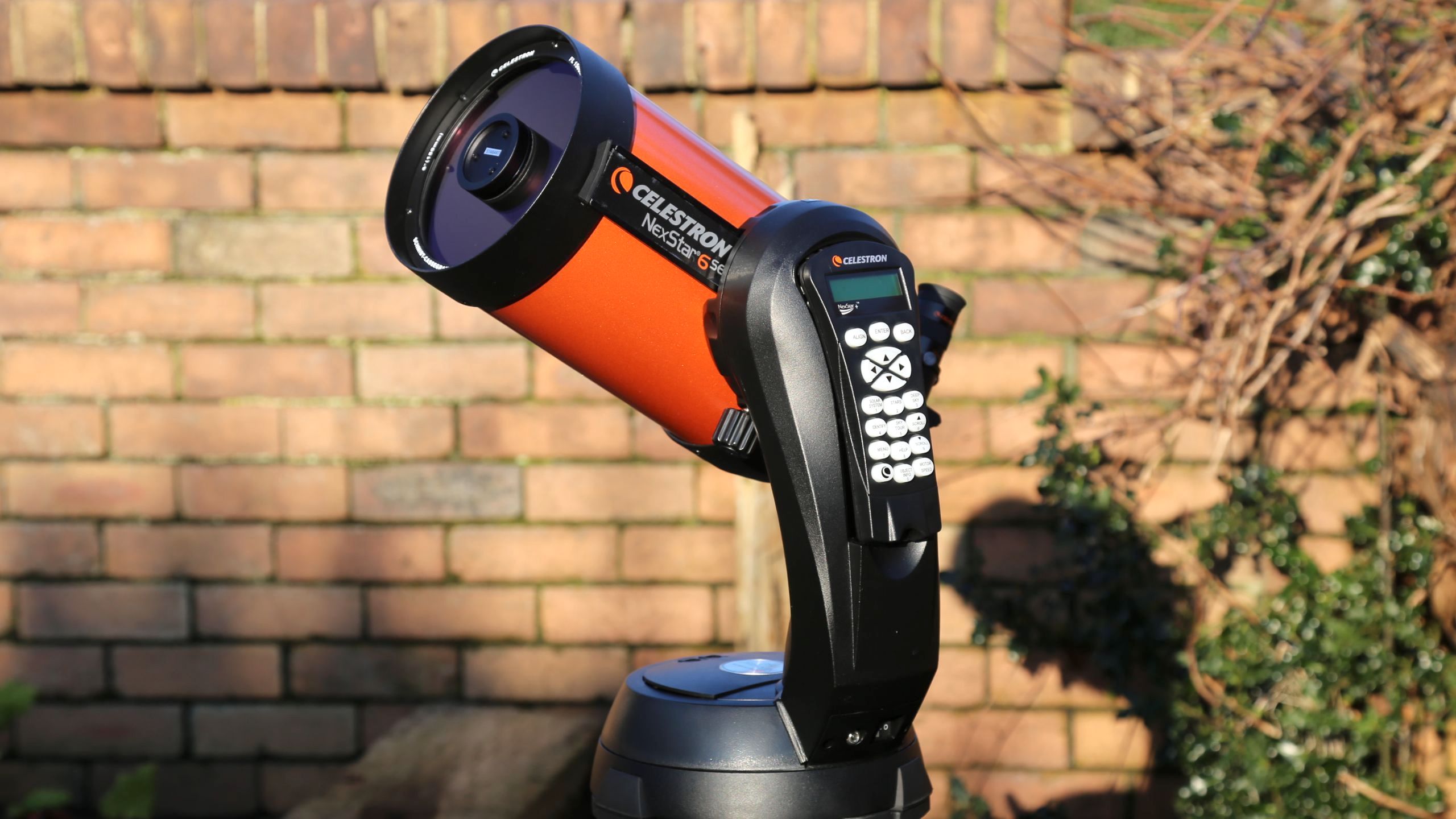
An excellent optical system gives tack-sharp views of star clusters, nebulae and galaxies, and the Moon and planets, the Celestron NexStar 6SE telescope impresses. The only important thing missing on this otherwise terrific telescope is smartphone integration. However, it does use a slightly old-fashioned GoTo system, it eats a lot of batteries, and its tripod makes it awkward to move around the house.
-
+
Superbly sharp optics
-
+
No color fringing
-
+
Good build quality
-
+
Easy to use
-
-
NexStar+ hand controller is old-fashioned
-
-
Lacks built-in spirit level
-
-
No smartphone integration
-
-
SkyAlign sometimes fails
-
-
Awkward to move
-
-
Only one eyepiece included
Why you can trust T3
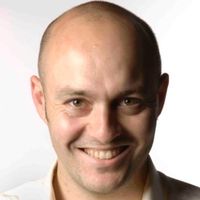
The Celestron NexStar 6SE telescope is one of the best telescopes and something of an icon in amateur astronomy. A Schmidt-Cassegrain design (here's an explainer of the different telescope types), it’s a bit of a heavyweight in more ways than one.
They may not be marketed as such, but most of the best telescopes for beginners are best with either planets or deep sky objects – rarely both. The Celestron NexStar 6SE is an exception, with the step-up in price coming with a huge advance in image quality. Its 6-inch aperture gives it high usable magnification on planets and the Moon and on distant star clusters, galaxies and nebulae.
As close to an allrounder as you’ll get, the Celestron NexStar 6SE is nevertheless beginning to show its age. A few design foibles aside, it’s hard to criticize its core quality, but its reliance on a hard-wired controller instead of a smartphone leaves it looking a tad old-fashioned. That may be so, but as it stands, the Celestron NexStar 6SE is a true all-rounder that will give many years of reliable and impressive observing.
Celestron NexStar 6SE review: Specifications
- Optical design: Schmidt-Cassegrain
- Aperture: 5.9”/150mm
- Focal length: 59”/1500mm
- Focal ratio: f/10
- Eyepiece focal length: 1”/25 mm (60x)
- Total kit weight: 21 lbs/9.5 kg
- Mount type: motorized altazimuth
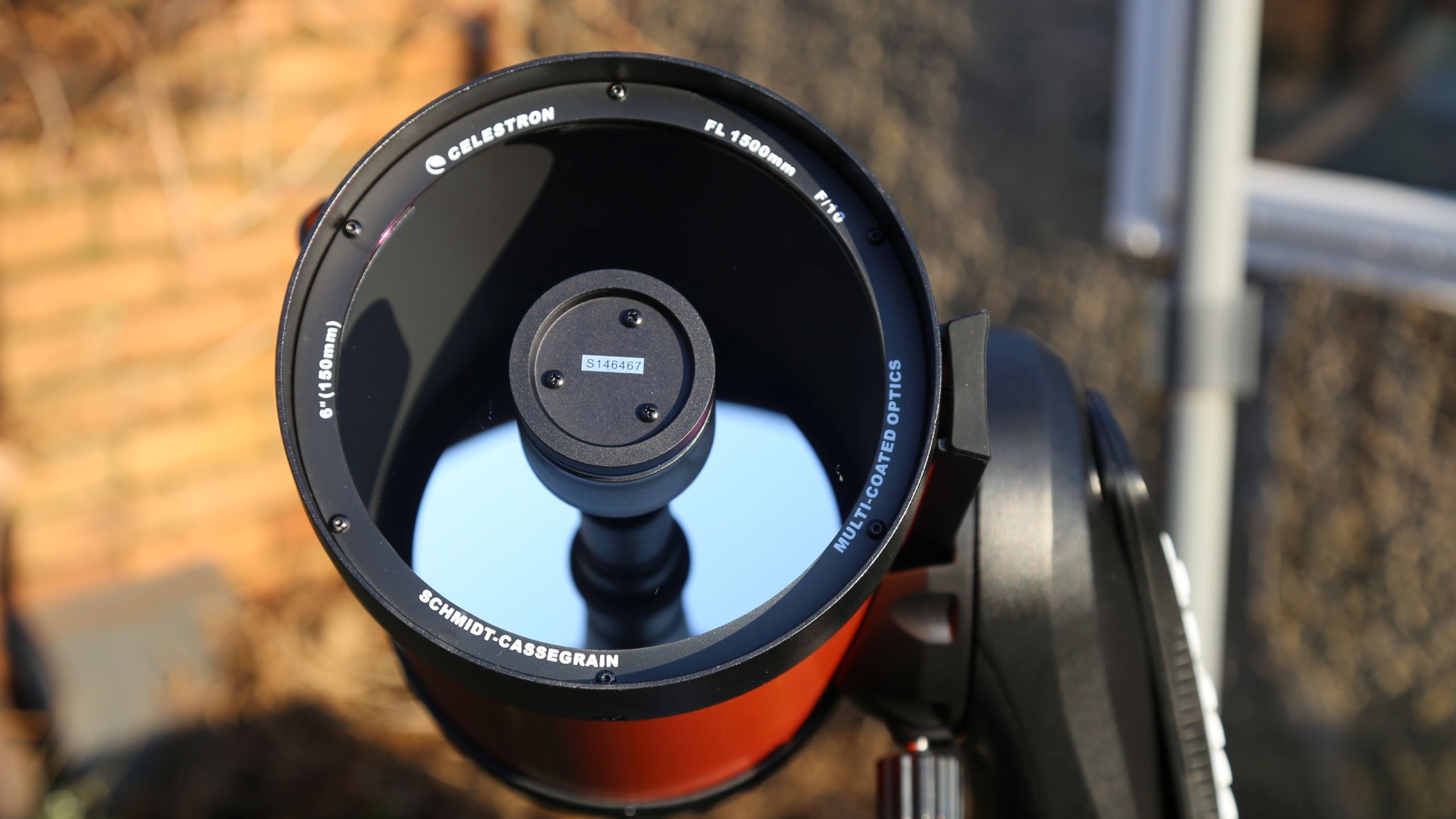
Celestron NexStar 6SE review: price and release date
The Celestron NexStar 6SE originally went on sale in 2017 and costs $1,099 / £1,149 / AU$2,300. It sits in the middle of the NexStar range, which also includes the smaller NexStar 4SE and NexStar 5SE as well as the larger NexStar 8SE.
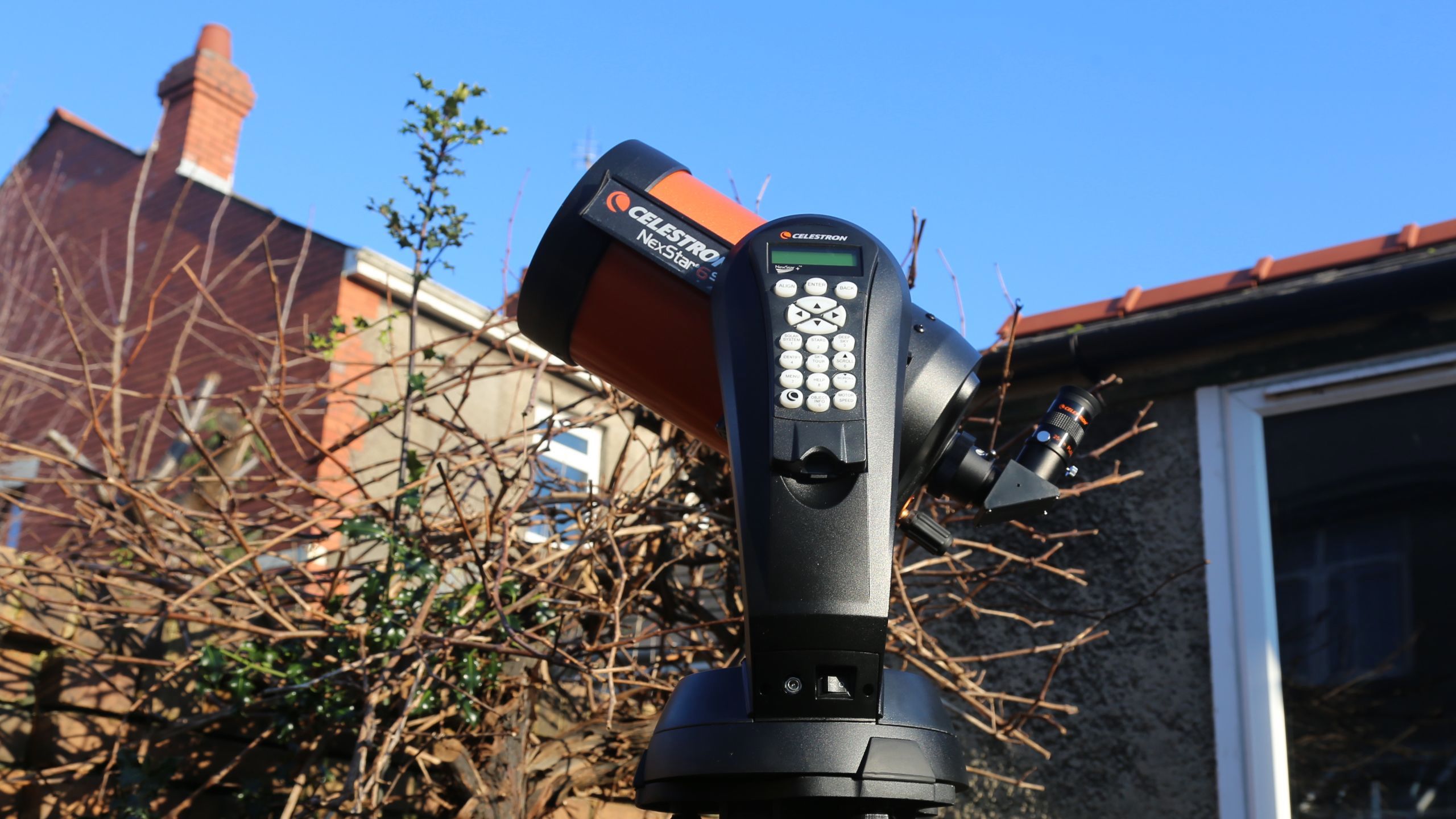
Celestron NexStar 6SE review: features and what’s new
If you’ve been into astronomy for more than a few years you’ll probably recognize the Celestron NexStar 6SE’s orange tube. A variant of the reflector telescope, this Schmidt–Cassegrain has a 6-inch aperture, which means it lets a lot of light in. It’s got a focal length of 59”/1500mm, which for any given eyepiece means a lot more usable magnification is possible. So it’s rather a shame that it comes with just one eyepiece, a mid-range 1-inch/25mm Plossl that’s good enough but needs companions.
Equally, as attractive as its core optical quality is this telescope's fully automated GoTo mount. The tube is fixed to a single fork arm mount, which sits on a custom-made tripod, but it’s what’s attached to the telescope that makes this telescope so easy to use. Attached to the side of the mount by a coiled cable is a chubby NexStar+ hand controller that operates the telescope. Inside it is a database of 40,000 objects in the night sky – from stars to nebula – and their exact positions on any given date and for any given location.
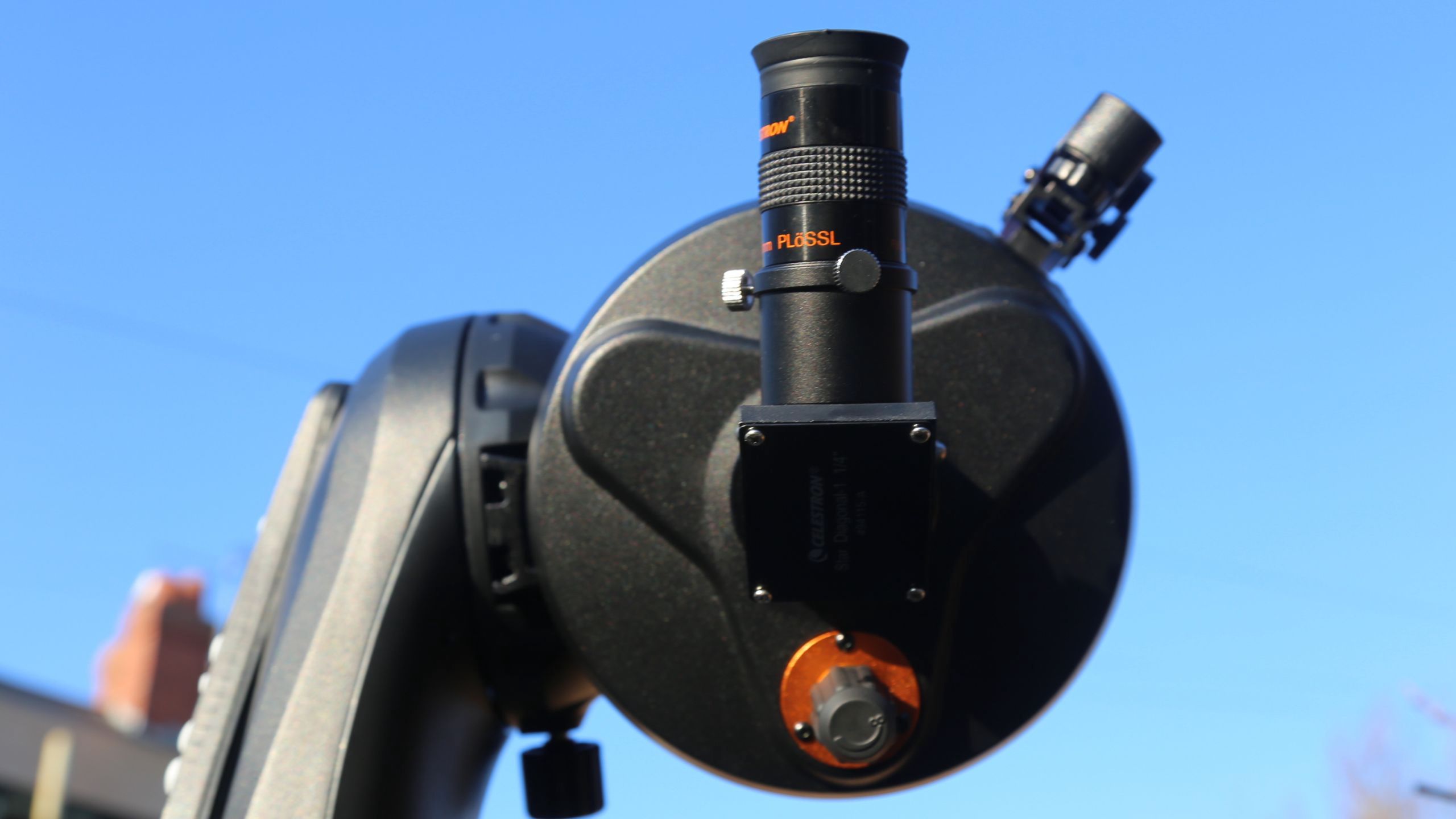
Celestron NexStar 6SE review: set-up and use
Despite its relatively small and compact design, considering the size of its telescope tube, the Celestron NexStar 6SE is rather tricky to maneuver. Part of the problem is its enormously wide tripod. Is there to give the telescope more balance, of course, which does prove critical to it working properly, but it also makes it difficult to shift out around the house and out of doors. I found I had to collapse part of the tripod to take it out of a regular-sized kitchen door and into a backyard, which wasn't ideal.
Get all the latest news, reviews, deals and buying guides on gorgeous tech, home and active products from the T3 experts
Setting up and using the Celestron NexStar 6SE is relatively easy – once you know how. The secret sauce is Celestron’s SkyAlign tech that automatically aligns the Celestron NexStar 6SE using any three bright objects. With most similar systems you need to know the stars – at least the bright stars – and point at two or three of them in turn. With SkyAlign you just point the telescope, using the hand controller to control the motor, at any bright star, being careful to consult the eyepiece to ensure the star is entered. Repeat that process three times and the Celestron NexStar 6SE mostly succeeds with its alignment.
During our test, this didn’t always work, and when it did, slewing automatically to an object in the database sometimes resulted in an empty field of view. It was always because the Celestron NexStar 6SE wasn’t absolutely level. Using a spirit level in the dark isn’t particularly easy, and the fact that the Celestron NexStar 6SE’s mount doesn’t have one built-in makes it even more difficult to get right. The tripod is easily tweakable, but without a spirit level that’s wasted. There is a button-style spirit level in the box, but that’s way too easy to lose. Either way, don’t skip this step.

With the Celestron NexStar 6SE totally level NexStar+ world really well, though we also found that the Star Pointer red dot finderscope needed careful alining – using a screwdriver to loosen and tighten its fittings – during the day to get it completely in sync with the eyepiece.
However, if care is taken, then the Celestron NexStar 6SE hugely impresses. Its large aperture and StarBright XLT coatings combine to create ice-cool images with a sharpness that’s worthy of repeated gasps. With the Celestron NexStar 6SE aimed at the Orion Nebula (M42), the detail of this stellar birthplace was exquisite, while close-ups of the lunar surface showed individual mountains and valleys. It does require additional eyepieces, but the Celestron NexStar 6SE has bags of usable magnification. At no point was any no colour fringing noticeable.
A low note on an otherwise pleasing package is battery power. The Celestron NexStar 6SE requires a whopping eight AA batteries, which it gets through in just a few hours. I advise you to go for the added expense of an adaptor to use an external power supply (or one of the best portable power stations), though you can use the Celestron NexStar 6SE’s motor on low mode to save energy.

Celestron NexStar 6SE review: verdict
The Celestron NexStar 6SE is an assured telescope best suited to amateur astronomers looking for higher magnifications and sharper, more refined views of both deep-sky and solar system objects. However, despite being hugely impressive from an optical point of view, its NexStar+ hand controller is beginning to look a bit old-fashioned and clunky compared to how more modern ‘smart’ telescopes work. For now, it’s a classic telescope worthy of investing in, but it won’t be too long before its high price will be difficult to justify when there are even easier-to-use alternatives to choose from.
Celestron NexStar 6SE review: alternatives to consider
If you want to go even bigger than the Celestron NexStar 6SE’s 6-inch aperture, the most cost-effective way is to go for a Dobsonian design like the Celestron StarSense Explorer, which comes in 8-inch and 10-inch variants. It’s a completely manual telescope but comes with Celestron’s much more modern StarSense technology, which uses an app as a guide but requires a smartphone to be perched on an attached holder.
Exactly the same tech comes with the Celestron StarSense Explorer DX 130AZ, a 5.1-inch Newtonian reflector telescope. However, if you really want the latest and greatest astro-imaging ’smart’ telescope, then go for something like the pricier Unistellar eVscope 2 digital telescope, which is motorized like the Celestron NexStar 6SE but aligns completely automatically and delivers stacked images of deep-sky objects to your smartphone. However, smart telescopes like this do lack eyepieces, which some amateur astronomers find off-putting.
Jamie is a freelance journalist, copywriter and author with 20 years' experience. He's written journalism for over 50 publications and websites and, when he's not writing, spending most of his time travelling – putting the latest travel tech through its paces.
